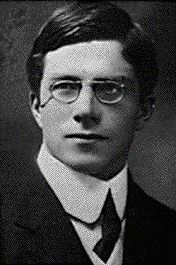For Scientific Institutions, Racial Reconciliation Requires Reparations
By C. Brandon Ogbunu,
Scientific American
| 06. 12. 2020
Antiracism in science must be about much more than challenging the bigoted graybeards of our past such as Ronald A. Fisher.
Ronald Fisher as a steward at the First International Eugenics Conference, 1912 (via wikipedia)
Amidst protests and conversations on racism following several instances of police violence, scientific institutions are reevaluating their approach to dealing with anti-Black racism—extant, historical or symbolic. For example, on Wednesday, June 10, a large segment of the scientific community (and the staffs of prominent journals) participated in a strike, where the goal was to reflect on how Black people—students, trainees, staff, and faculty—are treated, and how we can make the scientific paradigm more inclusive.
This includes several ongoing policy discussions surrounding diversity and inclusion, and very specific exchanges about how we remember and celebrate historical figures. For example, the Society for the Study of Evolution (SSE) is one of many influential scientific societies embroiled in a debate over renaming a prestigious award that currently commemorates Ronald A. Fisher (the R.A. Fisher Prize). Fisher was a pioneer of modern population genetics and one of the most influential scientists of the last century. His influence is as great in genetics as it is statistics, the latter...
Related Articles
By Josie Ensor, The Times | 12.09.2025
A fertility start-up that promises to screen embryos to give would-be parents their “best baby” has come under fire for a “misuse of science”.
Nucleus Genomics describes its mission as “IVF for genetic optimisation”, offering advanced embryo testing that allows...
By Hannah Devlin, The Guardian | 12.06.2025
Couples undergoing IVF in the UK are exploiting an apparent legal loophole to rank their embryos based on genetic predictions of IQ, height and health, the Guardian has learned.
The controversial screening technique, which scores embryos based on their DNA...
By Frankie Fattorini, Pharmaceutical Technology | 12.02.2025
Próspera, a charter city on Roatán island in Honduras, hosts two biotechs working to combat ageing through gene therapy, as the organisation behind the city advertises its “flexible” regulatory jurisdiction to attract more developers.
In 2021, Minicircle set up a...
By Vardit Ravitsky, The Hastings Center | 12.04.2025
Embryo testing is advancing fast—but how far is too far? How and where do we draw the line between preventing disease and selecting for “desirable” traits? What are the ethical implications for parents, children, clinicians, and society at large? These...




